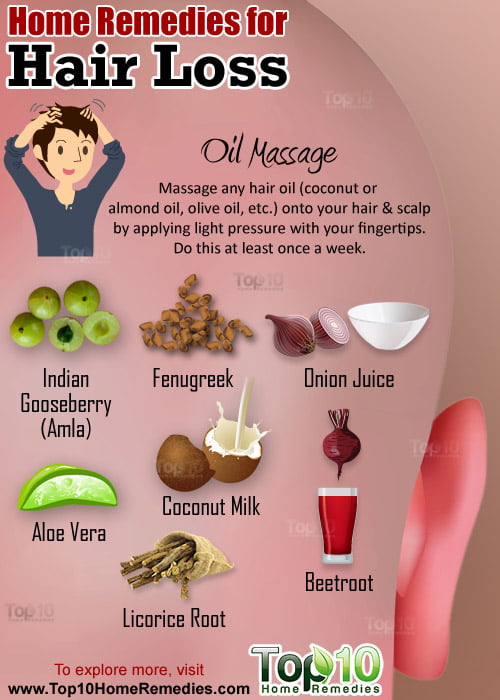Vitamin E is often called a magic ingredient for our skin, eyes and hair. Basically, vitamin E belongs to a cluster of eight fat-soluble vitamins known as tocopherols and tocotrienols. The best thing about vitamin E is that it’s an antioxidant and being so, it can contain cell damage and neutralise harmful free radicals. Experts say that on an average, men would need 4 mg of vitamin E a day and women could opt for 3 mg every day.
Here’s how vitamin E can keep your crowning glory healthy and shining.
1. How can Vitamin E Promote Hair Growth?
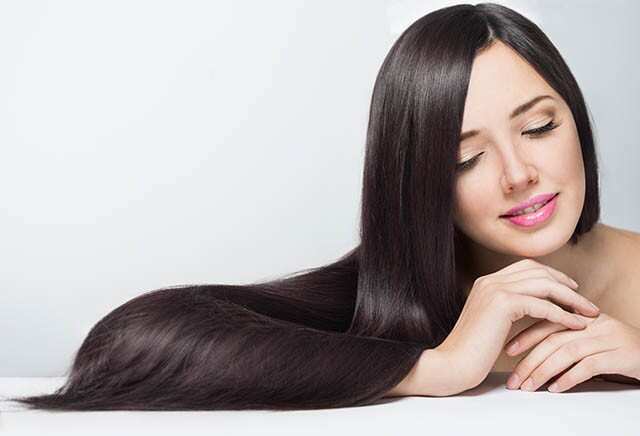
Normally, a person loses up to 100 hairs (out of 100,000 to 150,000 strands on our head) each day. These will just amount to more than one clump. But, if we start losing several clumps of hair each day, then it becomes a veritable cause of worry. Hair fall isn’t a disease and there are several options that can help you counter relentless loss of hair. Taking vitamin E orally is one of them. You can use hair masks with vitamin E as well. Now, how does vitamin E help in curbing hair loss? To begin with, vitamin E is known for its antioxidant properties and hence, this particular vitamin can repair damaged hair follicles. What’s more, thanks to the antioxidant properties, tissue corrosion can be prevented with vitamin E. In other words, vitamin E ensures that hair follicles remain perfectly healthy thereby boosting hair growth. Vitamin E can also prevent hair loss because it helps in smoother blood circulation and fights brittleness in your tresses.
Vitamin E for Hair – 3 Top Ways to Use Vitamin E Oil Capsule
2. How does Vitamin E make your Hair Shinier?
Have you been straightening your hair frequently? Do you have a stubborn habit of blow-drying your hair after a wash? Beware; these practices can make your hair look dull and lifeless. With excessive use of straighteners and blow-drying, your tresses can lose their natural shine. Experts say that one should be aware of a common pattern of hair breakage called trichorrhexis nodosa, which can get exacerbated by overheating hair or using a whole host of chemical-laden hair products. This condition can also make your hair look dull by weakening it substantively. Add to it UV exposure. Yes, UV exposure can not only damage your skin, but can also wreak havoc on your tresses. Basically, experts say that UV can damage pigments. Vitamin E can be a big help in bringing back the natural shine to your hair by countering UV exposure with all its might. If you use vitamin E oil regularly, you can see the difference in just a few days.
3. How Important is Vitamin E for your Hair Scalp Health?
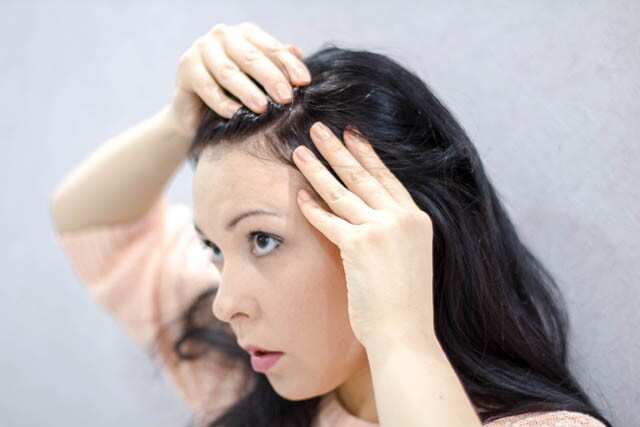
Experts say that several oral medications prescribed for bedsores or skin irritations contain vitamin E because the latter can facilitate healing of wounds. Similarly, there can be numerous infections that can cause dry, flaky scalp and a topical application of vitamin E can be the saviour in such cases. Vitamin E can be a shield against conditions such as Seborrheic dermatitis as well – basically, it’s an itchy, red rash with concomitant white or yellow flakes. Seborrheic dermatitis is also linked to a fungus called Malassezia, which can be found on the scalp and they normally feast on oils secreted by hair follicles. If the fungi become too active, dandruff can be a painful outcome. In fact, a dry and itchy scalp can be a sign of vitamin E deficiency. Vitamin E has anti-inflammatory properties which can counter scalp skin irritations. What’s more, it forms a protective layer over the scalp skin and keep it hydrated. Moreover, since Vitamin E is fat-soluble, it can penetrate deep into the skin thereby healing infections.
4. Can Vitamin E for Hair to Boost Immunity?
Yes, it certainly can. If you take Vitamin E capsules regularly, then, among other things, your immune system will get rejuvenated. How can this help your scalp health? Well, a strong immunity will help you keep scalp infections such as psoriasis, scalp pruritus (essentially, itchy scalp) and also heavy hair loss (tellogen effluvium) at bay. All such conditions are basically triggered by stress, among other things – therefore, a boost to your immune system can keep stress under control.
5. How can you use Vitamin E Oil for Hair Health?

You can get 100 per cent pure vitamin E oil, if you look around in the market. Otherwise you can opt for blended oils. Needless to say, oiling is essential for hair health. A massage with vitamin E oil can make your hair healthier. You can heat a little bit of vitamin E oil and massage your scalp with it. Otherwise, you can add a bit of vitamin E oil to your conditioner and apply it after shampooing. You can also crush Vitamin E capsules and add the powder to any blended oils and apply it on your scalp. For best results, keep the mix overnight and rinse off in the morning.
6. Can we make Hair Masks with Vitamin E Capsule or Oil?
Here are some DIY vitamin E masks that can enhance hair health:
Aloe vera and vitamin E

Take 4 vitamin E capsules and pierce them to squeeze out the fluid. Mix the fluid with 3 teaspoons of aloe vera gel. Add a few drops of almond oil and mix it well. Apply on hair strands. Keep the mix on for about half an hour and wash with shampoo. This is a simple mask that can provide your tresses with moisture and vitamin E, both of which are essential for maintaining healthy hair.
Eggs and vitamin E
Take 3 eggs, 4 vitamin E capsules and two teaspoons of cold-pressed almond oil. Beat the eggs until fluffy and add a dash of Vitamin E gel (extracted from the capsules) to it. Mix them thoroughly and cover your hair with it. Wait for 45 minutes before washing off with a mild shampoo.
Jojoba oil and vitamin E

Jojoba can soothe your hair scalp. It is rich in antifungal properties that can help you maintain the health of your scalp. It also helps in getting rid of layers of dead skin, dandruff and dirt and leaves behind a clean and well-hydrated scalp. Jojoba is rich in vitamin E, Omega 6 & 9 fatty acids and a saturated fatty acid that battles free radicals and oxidative stress. Jojoba hair oil can also unclog hair follicles. So, combining jojoba oil with vitamin E oil and aloe vera can certainly work wonders. Take 2 tablespoons each of pure vitamin E oil, Jojoba oil and aloe vera gel. Beat them together till get you a fluffy gel pack. Cover your hair with this and wait for an hour or so, before rinsing off with a mild shampoo.
Avocado and vitamin E
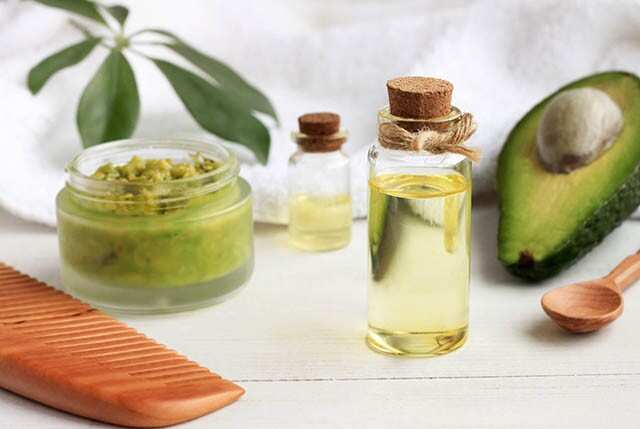
Avocado is rich in vitamin E. Add to it vitamin E oil and make a super powerful hair mask. What you need to do is blend half of a ripe avocado, one teaspoon of olive oil and one tablespoon of vitamin E oil. Get a smooth and creamy mixture. Apply this on your hair and wait for 45 minutes. Wash off with a shampoo and a conditioner.
7. What are the Foods that are Rich in Vitamin E?
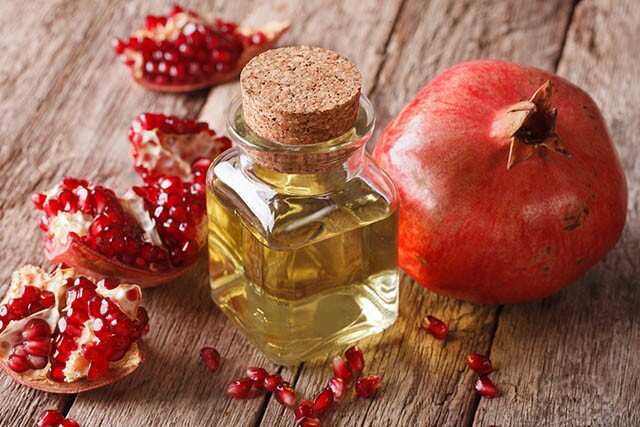
Apart from topical application of vitamin E fluid or oil, you need to strengthen your internal health as well with foods that are packed with the vitamin. Needless to say, including these foods in your meals can enhance hair health as well:
Pomegranate seeds: A rich source of vitamin C, vitamin E, potassium fibre, and they are low in calories. Stir the seeds into yogurt or toss them in oil and spices and pour the mixture over sprouts or salads.
Sunflower seeds: Rich in selenium, calcium, copper, vitamin E and magnesium. They can help you cope with migraines and stress. Sprinkle them on salads or stir-fries. Stir them into yogurt, sandwiches, rice and pasta or knead them into doughs.
Nuts: Another great source of vitamin E. Almonds, hazelnuts and peanuts are especially known for their high vitamin E content.
Spinach and broccoli: Both these green vegetables are a powerful storehouse of vitamin E and many other nutrients. The healthiest among the greens, eat spinach regularly for great hair and skin. Half a cup of spinach can work wonders. Use it raw in salads or sandwiches. You can also whip it up into a tasty soup or accompaniment. Stir fried (in olive oil) broccoli can also be part of your meals if you are looking for vitamin E sources.
Olive oil: Both olives and olive oil are considered two of the best sources of vitamin E. Use olives and olive oil liberally in your soups, salads, dips, pizzas and pasta to get your daily fix of vitamin E.
Avocado: Avocado is a super food that is not only rich in fibres and carotenoids, but is also packed with the benefits of vitamin E. In fact, this will give you 20 per cent of the required daily dosage of vitamin E. Avocado tastes delicious in all forms. Have it as a part of your salad or mash it up and whip up a guacamole which you can have with your toasted bread, pasta or with any meal really.
What are the Symptoms of a Vitamin E Deficiency?
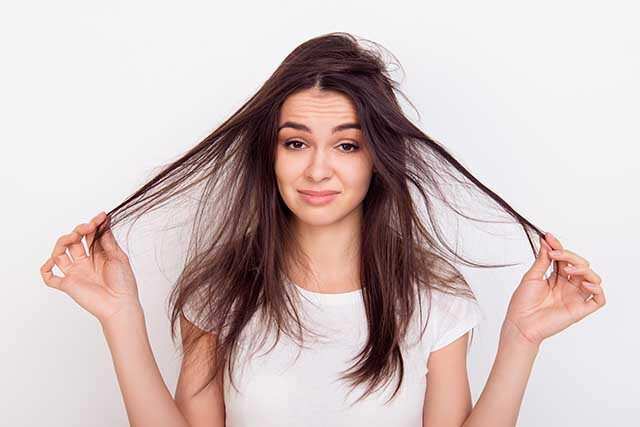
Experts say, on an average, the vitamin E level in our body should range between 5.5 mg and 17 mg per litre. A vitamin E deficiency can affect both children and adults, damaging, among other things, skin and hair. It’s an essential antioxidant for our body. A vitamin E deficiency can result in oxidative stress that can lead to weak muscles. Such a deficiency can also wreak havoc on our immune system. The vitamin deficiency can also result from diseases such as celiac disease and cystic fibrosis.
FAQs

Q. What can be the side effects of taking too much of vitamin E?
A. Some studies have recorded some common side effects of vitamin E. These include nausea, diarrhoea, rashes and even a blurry vision. So, do consult a doctor before you start taking the capsules.
Q. How can vitamin E fight oxidative stress?
A. Vitamin E’s antioxidant properties are known to reduce what is known as oxidative stress and contain free radicals that damage cells in hair follicles thereby causing hair loss. Oxidative stress occurs when there’s a mismatch between the production of free radicals and the ability of the body to nullify their harmful effects with the help of antioxidants.
Q. How do you combat female pattern baldness? Can vitamin E help?
A. Female pattern baldness is also called androgenetic alopecia and it affects both men and women. The bad news is, this is hereditary. In fact, female pattern baldness is very common, especially among post-menopausal women. Hair starts thinning on the scalp as the follicles start shrinking with age and other factors. Elaborating on this, experts say that hair follicles on the scalp can be affected by testosterone (present in women too) – the hormone can cause the follicles to shrink further leading to thinner and shorter hair. As a result, there can be patches of baldness on the scalp. Experts add that how sensitive follicles are to testosterone is usually determined by our genes. Unfortunately, there’s no cure as such for pattern baldness. There are some drugs available on prescription, but their efficacy is still being contested. Experts say that hair fall treatments in this case can possibly include hair transplant. But, as a preventive measure, you can opt for vitamin E, among other things, to maintain hair health.
Q. Can vitamin E cure dandruff?

A. Dandruff can be caused by several factors, including everyday stress. Experts say that if you shampoo too frequently, it can also disturb the oil balance on the scalp and lead to dandruff, among other things. Overuse can trigger scalp irritation. Experts also add that overuse of hair styling products too can trigger dandruff and other hair problems. Then there are medical conditions that can lead to those irritating flakes. Dandruff can get aggravated by the occurrence of such medical conditions as psoriasis and eczema and what is generally known as scalp ringworm. So, you need to consult a dermatologist first to know about the links between such medical conditions and dandruff, before relying on vitamin E for a cure. But yes, thanks to its antioxidant, anti-inflammatory and hydrating properties, taking vitamin E capsules or applying the contents of such capsules on to your scalp can help you fight dandruff.
[“source=femina”]

